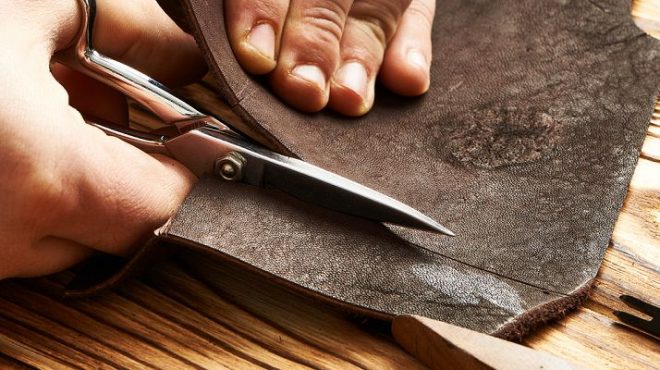A few years ago things made by hand were associated with years of shortage. Then there was no other way to equip your house, and the hostesses decorated the interior, using imagination and all sorts of improvised and obsolete materials. But now, good news for all needlewomen and holders of golden hands — handmade again relevant. In the period of mass production, hand-made products allow to decorate the interior with an exclusive thing. Made independently or ready, but «refined» items, as if informing us that the owner does not mind the time and energy to make his house beautiful. They are often associated with the life period when they were made to store the imprint of certain events, recall memories and emotions.
The three main «no» handmade: negligence, inaccuracy and poor-quality materials. If at school the lessons of work caused you only boredom, and any broken object was always easier to throw than repair — it is better to contact a professional master-decorator to qualitatively implement an interesting idea. As for the materials — the main thing is not to use the frank recyclable materials — the more that in the shops for needlework now a huge selection of quality tools and materials.
Advertisements

Advertisements
A popular trend of a handmeid is objects that imitate the old days. Even the newest thing can be artificially aged with special methods: dye two colors, wiping the top layer of paint, or using craquelure (a technique in which cracks appear on the surface, as if the paint is cracked with time).
For decoration of walls use a painting — manual or (that is even easier!) With the help of stencils. The painting can be made up the entire wall, an empty corner, the head of a bed or a sofa. If you trim the picture with wooden slats, you will get a picture or an imitation of the picture.
Glass surfaces, as a rule, painted with stained-glass paints. With their help on the window glass or the doors of glass facades of kitchen furniture, you can make a simulation of stained glass, and turn a simple glass lamp into a fairy-tale flashlight.
Very light in performance, and therefore a common technique — decoupage. With its help on any surface in the interior, you can apply a drawing in such a way that even the simplest piece of furniture or accessory will become more interesting and will be combined with scenes already played in the interior. Decoupage looks good in combination with aged surfaces.
Unique things are obtained in the patchwork technique — patchwork. This technique is time-consuming and requires a «flair» for a combination of colors and patterns. But the result is worth it — pillows, blankets, bedspreads and panels of shreds are funny and very cozy. A simple patchwork replacement is an application made of fabric, with which it is easy to update any textile items. Knitted décor Impressive designers have adopted ancient needlework techniques and «tie» all kinds of interior items: chairs, armchairs, sofas, pouffes, lamps, even pianos! Any thing covered with a knitted cloth instantly evokes a feeling of a cozy nest. Of course, the most obvious version of knitted decor — napkins, pillows, rugs, rugs, bedspreads. But much more picturesque and modern look «clothes» for unexpected items: clocks, lamps, sculptures, vases, teapots and cups … In order to emphasize the texture effect, choose thick threads and use either bright colors or interesting volumetric patterns. Textiles with your own hands.
Any home textiles can be sewn by yourself: curtains and bed linens, tablecloths and napkins, pillows and covers for furniture. This gives a huge field for experiments, because you can play with textures, colors and patterns, try different patterns. Such items are more interesting than the factory ones because each one has its own story. With the help of embroidery, appliqué or textile drawing, textiles can be labeled with initials or «encrypted» in the decor with deeply personal symbols that are intelligible only to the family. Then a simple tablecloth, napkin or blanket will become a memorable relic, which is passed down from generation to generation. Where to begin? Do not rush to undertake complex decorative techniques. Try to start with simple and learn, for example: decoupage — the technique of decorating objects with paper napkins, fragments of which paste on any surface (whether it is a chair or a flowerpot) and varnish, stained glass. Even if you do not know how to draw, you need a photo frame, stained-glass paints and a simple drawing on paper, which under the glass frame, you can easily depict it on the glass, mosaic. This simple technique can be applied on almost any surface, using ready-made sets for mosaic or natural material — egg shell.
Important details
• Do not limit the choice of materials only to shops for hobbies and creativity. Many interesting and inexpensive items can be found in construction shops or markets. This will save on materials.
• Do not forget that any old thing or new workpiece requires preliminary priming and polishing. The appearance of the finish coat depends on this.
• Do not apply paint to the product in a thick layer, as the paint may crack during drying. Better a few thin layers than one thick.
• It is desirable to dry the finish with a varnish naturally, without using a hair dryer.